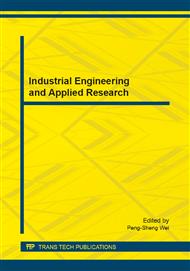p.364
p.371
p.375
p.382
p.386
p.391
p.394
p.398
p.402
Parameters Optimization on Method of Improving Diesel Nozzles’ Flow Coefficient and Flow Uniformity
Abstract:
This paper investigates methods to improve the flow coefficient of diesel nozzles so that the combustion efficiency can be improved and the emissions from diesels can be reduced. And abrasive suspend flow was introduced as the last process step of improving the flow coefficient and controlling the flow at a small range. To find appropriate parameters to make the measured flow after processing as far as close to the set flow, an orthogonal experiment was designed and implemented. According the analysis to the orthogonal experimental result, several line charts about the fluctuation caused by parameter were shown and a group of appropriate parameters was determinate.
Info:
Periodical:
Pages:
386-390
Citation:
Online since:
August 2014
Authors:
Price:
Сopyright:
© 2014 Trans Tech Publications Ltd. All Rights Reserved
Share:
Citation:


